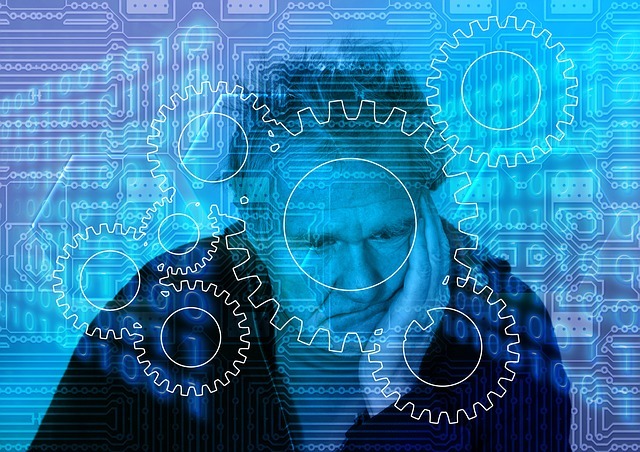Online course on entry-level computer networks
Now online courses are not created only by the lazy. I decided to join this movement and transfer to the online introductory course on computer networks, which I read at the university. The course video is publicly available on YouTube.

There are a lot of courses, textbooks, and simply articles on computer networks on the Internet. However, those who are just starting to study networks are faced with the problem of information explosion. The material is too much and it is not clear how to understand all this diversity.
I decided to make an entry-level course in which to briefly and succinctly talk about the basic concepts of computer networks. To do this, I had to remove from the course a lot of complex technical details that are not necessary for understanding the principles of network operation. The result is a short video course that you can watch in the foreseeable time (2-3 days). And after you understand the basic principles, you can figure out the technical details yourself on the books or materials on the Internet.
The course consists of short videos of 5-15 minutes: lectures and practices.
The lectures first describe the basic principles of networking, terminology, the OSI model, and the TCP / IP protocol stack. Then, individual network layers are considered: physical, channel (switches and hubs of Ethernet, VLAN), network (routing, IP, ARP, ICMP), transport (TCP and UDP, sockets, NAT) and application (HTTP, DNS, FTP and email protocols).
Playlist:
In practical exercises, the Wireshark network analyzer is used to intercept real packets that are transmitted over the network and see how they are arranged. There are practices on the protocols ARP, IP, ICMP, DHCP and TCP. For practices on application layer protocols (HTTP, SMTP, POP3, IMAP) that operate in string mode, a terminal client is used. Practices can be performed immediately after viewing lectures on the relevant topic.
If you are just starting to study networks, then it is recommended to watch lectures one after another. The concepts of computer networks are introduced in steps, and information from previous lectures is actively used.
If you already have a general idea of how networks work, then you can choose only topics of interest, watch lectures on them and immediately do practices.
Do not be alarmed if you started to watch lectures and do not understand anything.

Computer networks are hard to learn. To understand their work, you need to know how a large number of technologies and protocols work, and how they interact with each other. And we study networks in sequence: according to one protocol or technology per lesson. Therefore, the first stage inevitably raises questions, why are there so many things, and everything is so confusing? But when moving along the course, you will put everything in its place and you will see a complete picture of the work of networks.
No need to think that after studying the course you will immediately become professionals in the networks. This is only the first step, but it is very important, as it will give you the opportunity to understand other materials on the networks.
I try to make my course as useful and interesting as possible for the audience. Therefore, if you have questions or suggestions on how to improve the course, be sure to write. I will try to take them into account as much as possible.
Good luck in the study of computer networks!

Why do you need another course?
There are a lot of courses, textbooks, and simply articles on computer networks on the Internet. However, those who are just starting to study networks are faced with the problem of information explosion. The material is too much and it is not clear how to understand all this diversity.
I decided to make an entry-level course in which to briefly and succinctly talk about the basic concepts of computer networks. To do this, I had to remove from the course a lot of complex technical details that are not necessary for understanding the principles of network operation. The result is a short video course that you can watch in the foreseeable time (2-3 days). And after you understand the basic principles, you can figure out the technical details yourself on the books or materials on the Internet.
Course structure
The course consists of short videos of 5-15 minutes: lectures and practices.
The lectures first describe the basic principles of networking, terminology, the OSI model, and the TCP / IP protocol stack. Then, individual network layers are considered: physical, channel (switches and hubs of Ethernet, VLAN), network (routing, IP, ARP, ICMP), transport (TCP and UDP, sockets, NAT) and application (HTTP, DNS, FTP and email protocols).
Playlist:
In practical exercises, the Wireshark network analyzer is used to intercept real packets that are transmitted over the network and see how they are arranged. There are practices on the protocols ARP, IP, ICMP, DHCP and TCP. For practices on application layer protocols (HTTP, SMTP, POP3, IMAP) that operate in string mode, a terminal client is used. Practices can be performed immediately after viewing lectures on the relevant topic.
How to watch
If you are just starting to study networks, then it is recommended to watch lectures one after another. The concepts of computer networks are introduced in steps, and information from previous lectures is actively used.
If you already have a general idea of how networks work, then you can choose only topics of interest, watch lectures on them and immediately do practices.
Do not be alarmed if you started to watch lectures and do not understand anything.

Computer networks are hard to learn. To understand their work, you need to know how a large number of technologies and protocols work, and how they interact with each other. And we study networks in sequence: according to one protocol or technology per lesson. Therefore, the first stage inevitably raises questions, why are there so many things, and everything is so confusing? But when moving along the course, you will put everything in its place and you will see a complete picture of the work of networks.
Expected results
No need to think that after studying the course you will immediately become professionals in the networks. This is only the first step, but it is very important, as it will give you the opportunity to understand other materials on the networks.
I try to make my course as useful and interesting as possible for the audience. Therefore, if you have questions or suggestions on how to improve the course, be sure to write. I will try to take them into account as much as possible.
Good luck in the study of computer networks!
